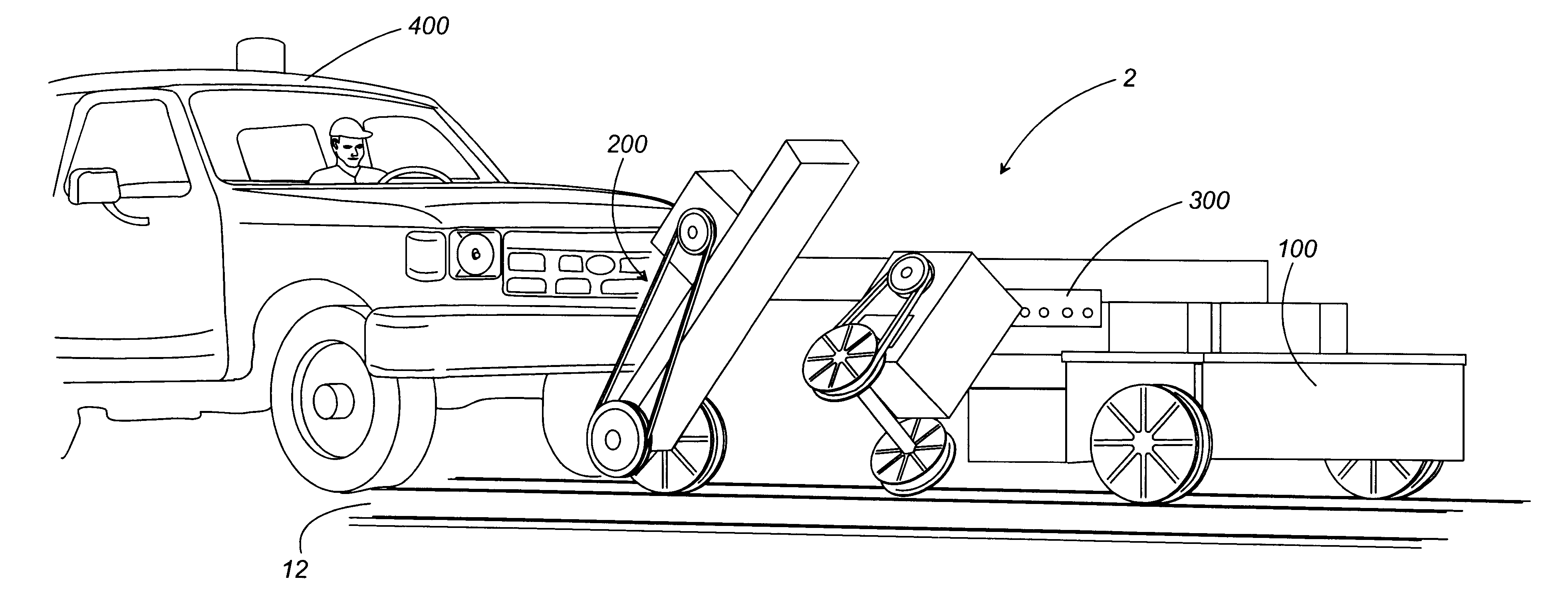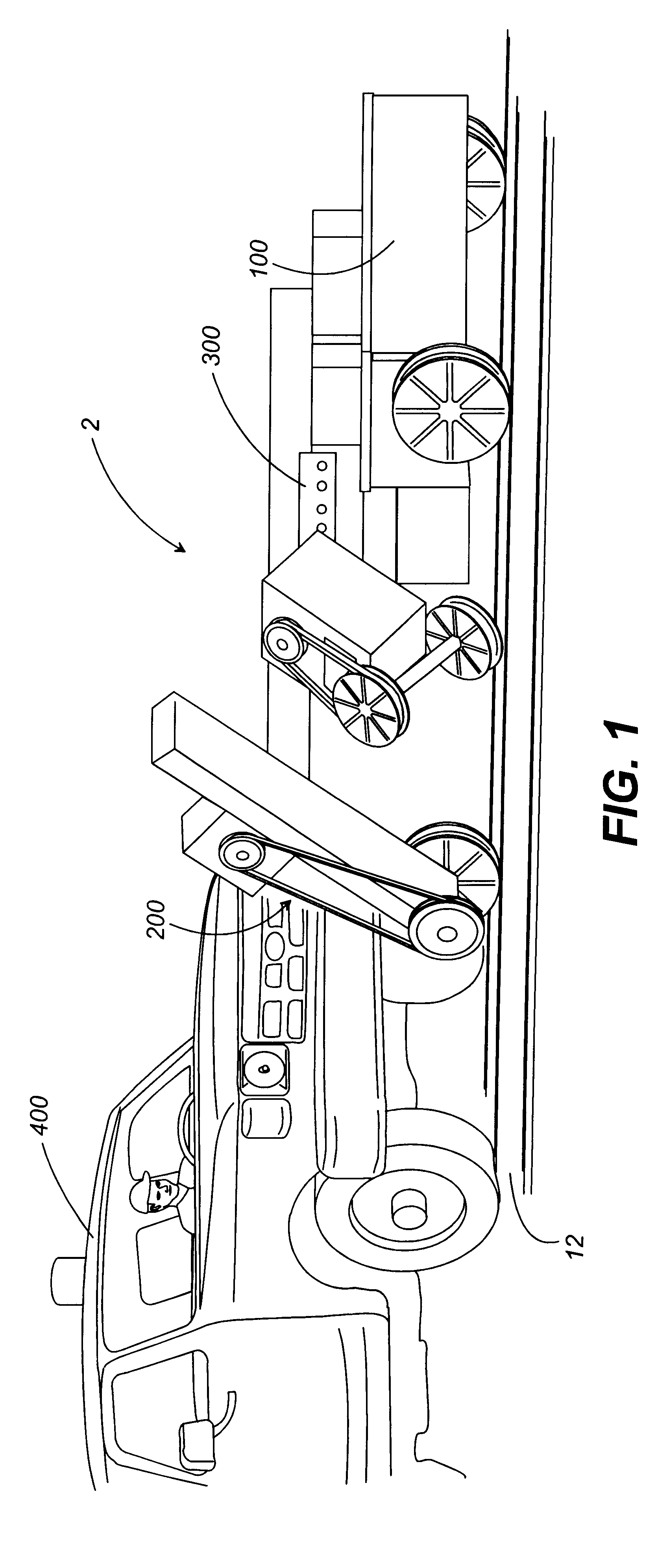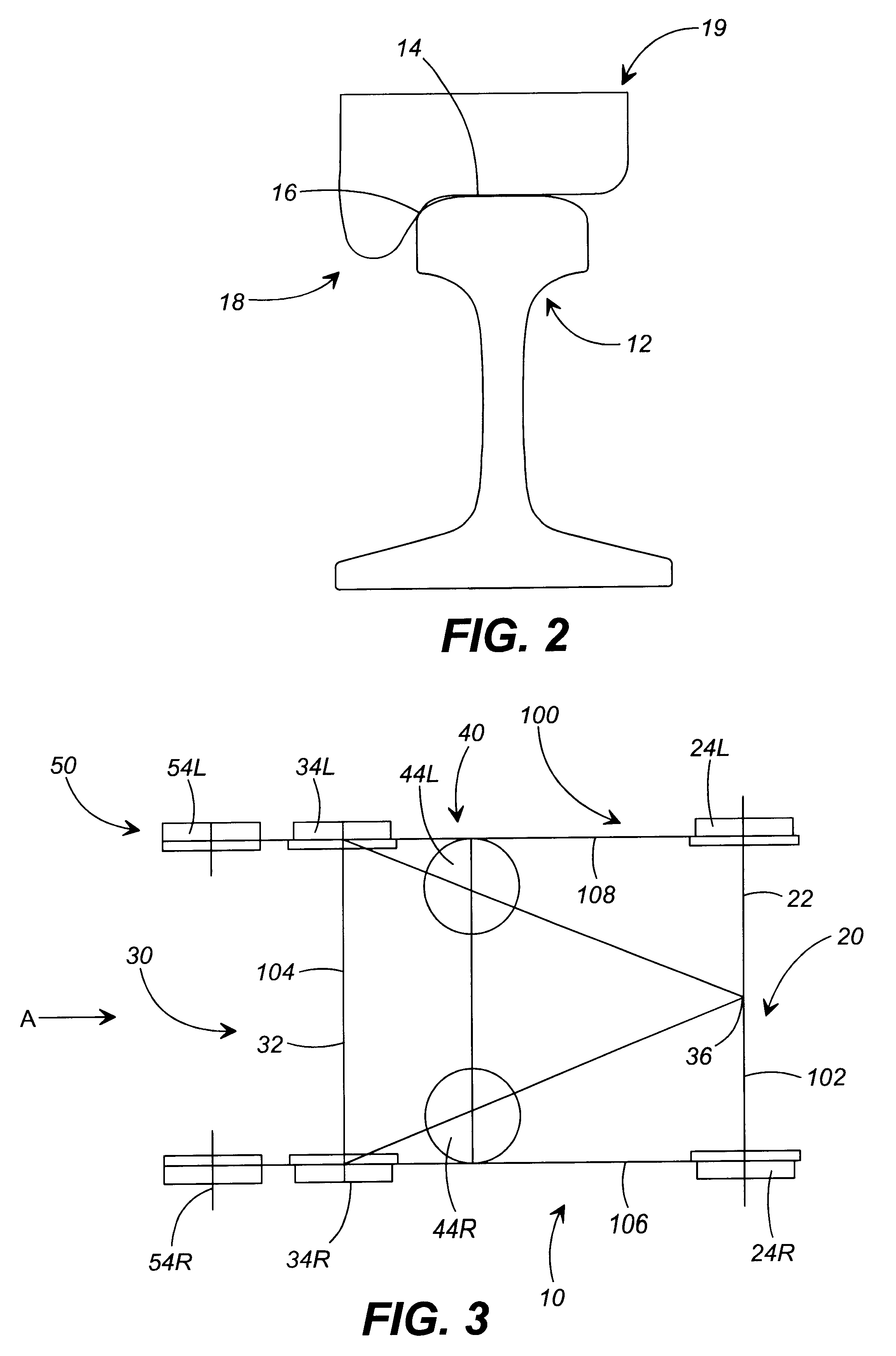Tribometer for testing the efficiency of lubrication upon a railroad track surface
a technology for lubricating efficiency and railroad tracks, applied in the direction of mechanical measuring arrangements, mechanical roughness/irregularity measurements, instruments, etc., can solve the problems of inability to easily relocate, compare raw data, and use of expensive monitoring instruments
- Summary
- Abstract
- Description
- Claims
- Application Information
AI Technical Summary
Benefits of technology
Problems solved by technology
Method used
Image
Examples
Embodiment Construction
Referring now in detail to the drawing figures, wherein like reference numerals represent like parts throughout the several views, as shown in FIG. 1 the tribometer 2 of the present invention preferably comprises a test cart 100, an attachment means 200 to attach the test cart 100 to a motive means to propel the test cart 100 down the railroad track 12, and automated systems 300 to control the operation of the test cart 100 and measure the various data of the rails, including the COF data.
The tribometer 2 is designed to ride along the surface of railroad rails 12 and measure and record data relating to rail lubrication, including data representative of the coefficient of friction of preferably the rail 12 running surface 14 and the rail 12 gauge surface 16 of both rails. FIG. 2 shows a cross section of a single rail 12. The rail 12 is the right rail of a two rail track if the direction of forward travel is into the drawing figure. In this configuration, the flange portion 18 of a ty...
PUM
 Login to View More
Login to View More Abstract
Description
Claims
Application Information
 Login to View More
Login to View More - R&D
- Intellectual Property
- Life Sciences
- Materials
- Tech Scout
- Unparalleled Data Quality
- Higher Quality Content
- 60% Fewer Hallucinations
Browse by: Latest US Patents, China's latest patents, Technical Efficacy Thesaurus, Application Domain, Technology Topic, Popular Technical Reports.
© 2025 PatSnap. All rights reserved.Legal|Privacy policy|Modern Slavery Act Transparency Statement|Sitemap|About US| Contact US: help@patsnap.com



